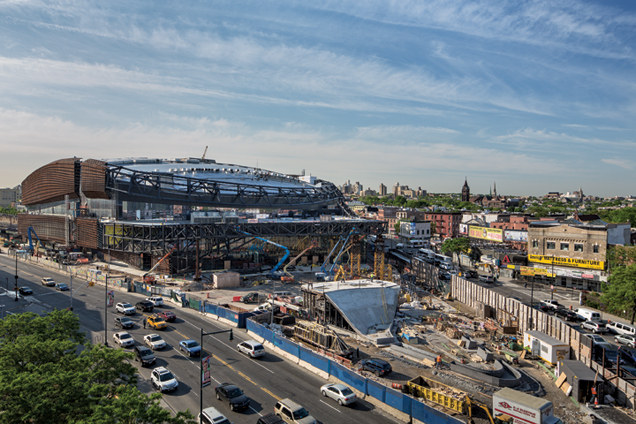
Fifteen years ago, the 22-acre plot for the $4.9-billion Atlantic Yards sports village in Brooklyn, N.Y., was an eyesore. For more than 20 years, drug dealers, gangs and prostitutes had populated the neighborhood. Many buildings were vacant. "Blighted Brooklyn" was a more fitting moniker than the familiar "Brownstone Brooklyn."
Now, crime is down, and land values are way up. Pedestrians are pushing strollers, not drugs. Brooklyn is on the map, thanks in large part to developer Bruce C. Ratner. In the late 1980s, he went where no Manhattan developer dared to go—to Brooklyn. First came an office campus called MetroTech Center (ENR 2/10/92 p. 26). Other commercial projects, which border the Atlantic Yards site, followed.
The urban pioneer's stake in the New York City borough, population 2.5 million, did not prepare him for the controversy over his most ambitious project: a public-private village set over a railyard next to the city's third-largest transit hub (ENR 3/8/04 p. 29). Foes of the Atlantic Yards plan, unveiled in 2003, often refer to Ratner by the first syllable of his name and remain outraged by the development's scale, density and architecture. Their lawsuits delayed Ratner's plan but failed to stop it.
Critics are especially appalled by the village's centerpiece: a 675,000-sq-ft arena for the National Basketball Association's Brooklyn Nets, owned in part by Ratner. Barclays Center is set to open with a Jay-Z concert on Sept. 28, five years later than first planned. Ratner's latest recession-altered plan also calls for six million sq ft of residential space, 247,000 sq ft of retail space and 336,000 sq ft of office space in 16 buildings, plus eight acres of open space. Build-out is expected to take 25 years instead of the original 10, at a cost of $4.9 billion, not the original $2.5 billion.
"Atlantic Yards has been about navigating [economic] turmoil and change," says MaryAnne Gilmartin, an executive vice president at the village's developer, Forest City Ratner Cos.
FCRC is jumping through hoops to stay in the game. It added partners, switched architects, redesigned elements and stretched out construction. To help cope with changes, including an arena-facade redesign, FCRC teams are using high-tech tools.
And to build the residential towers economically, the developer is diving into the high-tech factory-modular building business. If its plans crystallize, Atlantic Yards will be home to the world's tallest modular building.

Post a comment to this article
Report Abusive Comment